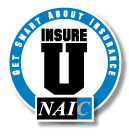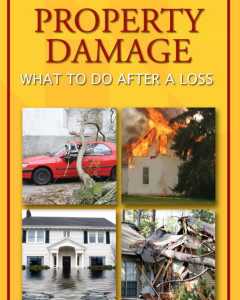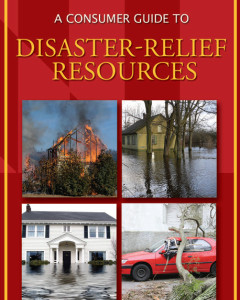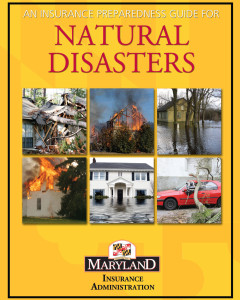- Flood Insurance
- How Insurance Works
- Types of Coverage
- Mandatory Purchase Requirement
- Changes in Flood Insurance Premiums
- Preferred Risk Policies
- Increased Cost of Compliance Coverage
- Filing a Claim After a Flood
- Maryland Insurance Administration
- Additional Flood Insurance Resources
FEMA Extends Grace Period for Flood Insurance Renewal Premiums
FEMA continues to take proactive steps to address the COVID-19 pandemic. To help serve its National Flood Insurance Program (NFIP) customers who may be experiencing financial hardships, the agency is extending the grace period to renew flood insurance policies from 30 to 120 days. This extension applies to NFIP flood insurance policies with an expiration date between February 13-June 15, 2020. For more information, please visit FEMA’s website.
Flood Insurance
In the past five years, all 50 states have experienced floods or flash floods. Most standard homeowners’ policies do not cover flood damage. But adding flood insurance coverage may be more affordable than you might think. An average flood policy costs around $540 a year, and rates start as low as $119 a year for homes in moderate-to-low risk areas. Flood insurance is an important consideration when buying floodplain property. The National Flood Insurance Program (NFIP) provides flood insurance coverage for structures and their contents, in communities participating in the NFIP. Under this program, federally insured or regulated institutions must require flood insurance policies on all new loans for structures in mapped 100 year floodplain areas recognized by the Federal Emergency Management Agency (FEMA). Baltimore City is a NFIP participating community.

Follow this link to download a Flood Insurance Application

Visit the National Flood Insurance Program (NFIP) Homepage for
Frequently Asked Questions about Flood Insurance and step-by step instructions for purchasing a flood insurance policy.
How it Works
When making, increasing, renewing, or extending any type of federally backed loan, lenders are required to conduct a flood zone determination using the most current FEMA Flood Insurance Rate Map (FIRM) to determine if any part of the building is located in an Special Flood Hazard Area (SFHA). If the building is in an hazard area, the federal agency or lender is required by law to provide written notification to the borrower that flood insurance is mandatory as a condition of the loan. If a portion of a specific property on which a building is located is within an SFHA, the purchase and notification requirements do not apply unless the building itself, or some part of the building, is in the SFHA. However, lenders, on their own initiative, may require the purchase of flood insurance even if a building is located outside an SFHA. Up to 25% of all NFIP flood losses arise from outside SFHAs (B, C, and X Zones).
Under federal regulations, the required coverage must equal the amount of the loan (excluding appraised value of the land) or the maximum amount of insurance available from the NFIP, whichever is less. The maximum amount of coverage available for a single-family residence is $250,000 and for non-residential (commercial) buildings is $500,000. Federal agencies and regulators, including government-sponsored enterprises, such as Freddie Mac and Fannie Mae, may have stricter requirements.
Types of Coverage (Building versus Contents Coverage)
Flood insurance protects two types of insurable property: building and contents. The first covers your building, the latter covers your possessions; neither covers the land they occupy.
Building coverage includes:
Insured building and its foundation
Electrical and plumbing system
Central air conditioning equipment, furnaces, and water heaters
Refrigerators, cooking stoves, and built-in appliances such as dishwashers
Permanently installed carpeting over unfinished flooring
Contents coverage includes:
Clothing, furniture, and electronic equipment
Curtains
Portable and window air conditioners
Portable microwaves and dishwashers
Carpeting that is not already included in property coverage
Clothing washers and dryers
Mandatory Purchase Requirement
Pursuant to the Flood Disaster Protection Act of 1973 and the National Flood Insurance Reform Act of 1994, the purchase of flood insurance is mandatory for all federal or federally related financial assistance for the acquisition and/or construction of buildings in Special Flood Hazard Areas (SFHAs). An SFHA is defined as any A or V flood zone on a Federal Emergency Management Agency (FEMA) Flood Insurance Rate Map (FIRM).
The mandatory purchase requirement also applies to secured loans from such financial institutions as commercial lenders, savings and loan associations, savings banks, and credit unions that are regulated, supervised, or insured by federal agencies, such as the Federal Reserve, the Federal Deposit Insurance Corporation, the Comptroller of Currency, the Farm Credit Administration, the Office of Thrift Supervision, and the National Credit Union Administration. It further applies to all loans purchased by Fannie Mae or Freddie Mac in the secondary mortgage market.
Federal financial assistance programs affected by the laws include loans and grants from agencies such as the Department of Veterans Affairs, Farmers Home Administration, Federal Housing Administration, Small Business Administration, and FEMA Disaster Assistance.
Changes in Flood Insurance Premiums
The National Flood Insurance Program (NFIP) is in the process of implementing Congressionally mandated reforms required by the Homeowner Flood Insurance Affordability Act of 2014 (HFIAA) that repeal and modify the BiggertWaters Flood Insurance Reform Act of 2012 (Biggert-Waters). The new law slows some flood insurance rate increases and offers relief to some policyholders who experienced steep flood insurance premium increases in 2013 and early 2014. Flood insurance rates and other charges will be revised for new or existing policies beginning on April 1, 2015. In addition to insurance rates, other changes resulting from Biggert-Waters and HFIAA will be implemented that will affect the total amount a policyholder pays for a flood insurance policy.

For more information about these changes, follow the link to access FEMA’s Fact Sheet: April 2015 Program Changes & Flood Insurance Premiums
What is the Preferred Risk Policy (PRP)?
The Preferred Risk Policy offers multiple coverage combinations for both buildings and contents (or contents-only, for renters) that are located in moderate-to-low risk areas (B, C, and X Zones). Preferred Risk Policies are available for residential or non-residential buildings also located in these zones, and that meet eligibility requirements based on the building’s entire flood loss history.
What is Increased Cost of Compliance (ICC) Coverage?
If a flood damages your property, you may be required by law to bring your home up to community and/or state floodplain management standards. If you have NFIP insurance, and your home has been declared substantially damaged by your community, ICC coverage is provided to cover up to $30,000 of the cost to elevate, floodproof, demolish, or relocate your property. ICC coverage is in addition to the coverage you receive to repair flood damages; however, the total payout on a policy may not exceed $250,000 for residential buildings and $500,000 for non-residential buildings.
Filing a Claim After a Flood
You secured flood insurance, underwent a flood, now what?
After a flood, contact your insurance agent or insurer. They will probably advise you to mitigate your damage as soon as possible. You can prevent mold by removing wet items. You can prevent fungal growth by cleaning and drying wet items.
Take photos of floodwater in your home and of any damaged property.
Also make a list of damaged or lost items including the date you purchased them and the value with any receipts.
Beware of fraudulent schemes after a flood. Protect yourself by getting more than one bid from contractors and requesting at least three references. Ask for proof of necessary licenses, building permits, insurance and bonding. Record the contractor’s license plate number and driver’s license number, and then check for any complaints with the Better Business Bureau.
If your car was flooded, check out this helpful handout from the Maryland Insurance Association.

Insure U was created by the National Association of Insurance Commissioners to develop further public understanding and preparedness for disasters and insurance. Follow the link for more information.
Maryland Insurance Administration
The best time to review your flood insurance options is before a flood occurs. Without understanding your risk and insurance options, you might find yourself inadequately covered when you need coverage the most. Just because you don’t live near a body of water doesn’t mean that you’re safe from flooding. According to the National Flood Insurance Program (NFIP), floods are the number one natural disaster in the U.S. They calculate that consumers outside of high-risk flood areas account for more than one in five flood insurance claims. The National Association of Insurance Commissioners (NAIC) offers this information to help you get smart about your flood insurance options.
The standard flood insurance policy covers direct physical damage to your insured property up to the replacement cost or actual cash value of damages, or the policy limit of liability, whichever is less. It covers structural damage, including damage to the furnace, water heater, air conditioner, flooring and debris clean-up. Coverage for basements, crawlspaces and ground-level enclosures on elevated homes is limited, so talk to your agent about any restrictions in your policy. The contents of your home are not covered under a standard flood insurance policy.
Visit the Maryland Insurance Administration for more resources and information.
 |
 |
 |
Additional Flood Insurance Information
Maryland Flood Fact Sheet—Hurricane Season 2007 (FEMA)
Insurance Tips for Homeowners (Maryland Insurance Administration)
Insurance Information Card (Maryland Insurance Administration)
April 2015 Program Changes Fact Sheet (FEMA)
Why Renters Insurance is a Good Idea (Maryland Insurance Administration)
Insurance Preparedness Guide for Natural Disasters (Maryland Insurance Administration)
Maryland Disaster Relief Resources (Maryland Insurance Administration)
After a Loss Brochure (Maryland Insurance Administration)

